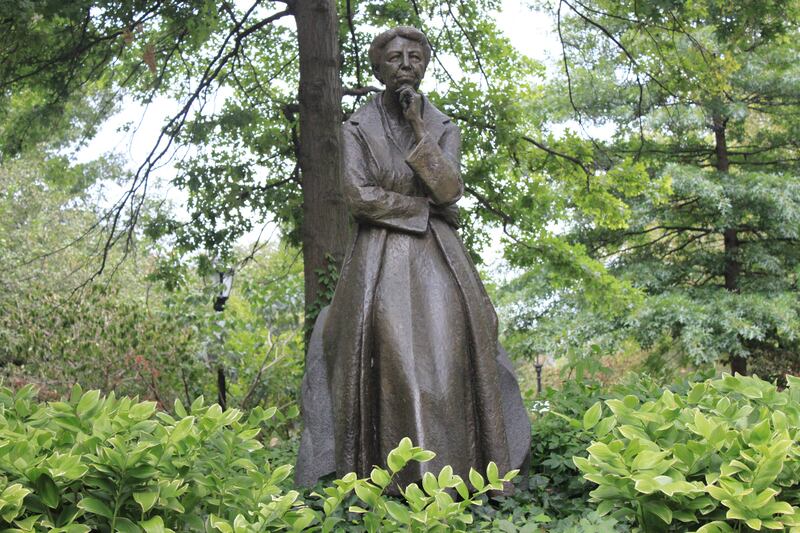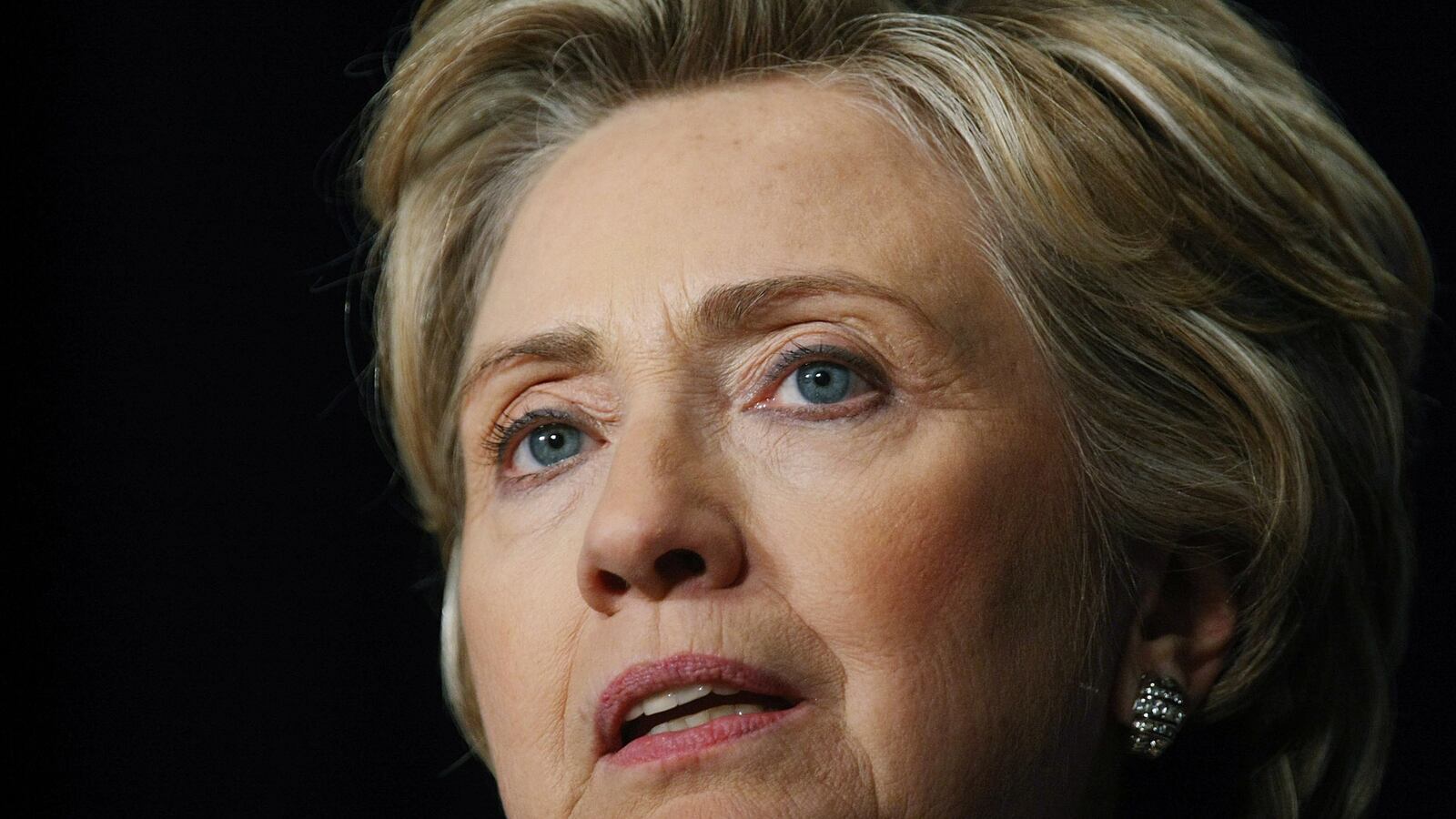
When journalist Bob Woodward revealed in his 1996 book, The Choice, that then-First Lady Hillary Clinton would hold imaginary conversations in the White House with Eleanor Roosevelt, it was treated as a mini-scandal. All in the name of “therapeutic release,” these conversations supposedly helped Clinton get through tough times after the failure of health care reform, which she had spearheaded.
“[Roosevelt] usually responds by telling me to buck up, or at least to grow skin as thick as a rhinoceros,” Clinton wrote in her newspaper column, not surprisingly modeled after Roosevelt’s long running “My Day” column. Commentators had their fun with Clinton’s beyond-the-grave confession, likening it to Nancy Reagan’s reliance on astrology during her tenure as First Lady.
For Clinton, this was no laughing matter. An admirer of Roosevelt’s prolific activism, she was even joined in these consciousness-expanding sessions by Mary Catherine Bateson, daughter of the acclaimed anthropologist Margaret Meade. Clinton wanted to learn from the former First Lady, who served as her husband’s “eyes and ears” through some of the greatest challenges any president has faced: the Great Depression and the Second World War. Roosevelt had also stood with grace and courage against some of the most searing attacks aimed at anyone in public life.
Likewise, Clinton, from the time she first appeared on the national scene in 1991,was the target of relentlessly partisan and extremely personal attacks from what she would term “the vast right-wing conspiracy.” So, put another way, Clinton could relate. She turned to Roosevelt, and the history of her time in the White House for perspective, and also for inspiration. She kept a portrait of Roosevelt in her office, and in her book, Hard Choices, even quoted the former First Lady as saying, “A woman is like a tea bag, you never know how strong she is until she’s in hot water.”
“I love that and, in my experience, it’s spot on,” Clinton wrote.

Even beyond the slings and arrows aimed at them both in public life, these two women have a lot in common. The most obvious being their unfaithful husbands, but that really is the least of it. Each weathered the crisis in their marriage by going on to find solace and meaning in public service: where they truly are soul mates is in their devotion to social justice, human rights, and the advancement of women and girls in society.
“More than anybody I’ve ever talked with, Hillary understood the challenges Eleanor faced, the strength it took to become herself and to find a new way to lead,” says Allida Black, founder and editor of the Eleanor Roosevelt Papers Project at George Washington University.
When Roosevelt entered the White House, “she wanted a bigger role than she got. The paper trail is a mile long on that,” says Black. Forced to give up her teaching and her outside organizations to avoid conflicts of interest, she had to figure out how she could be of use. She was relentless in pressing her husband and other officials to take risks and do what was right for the country.
Ken Burns’ series on the Roosevelts on PBS points out that Eleanor never stopped lobbying for an anti-lynching law, even when her husband backed off. The President did not want to alienate Southern legislators whose votes he needed on his New Deal legislation. “I think I sometimes acted as a spur, even though the spurring was not always wanted or welcome,” she said.
Clinton got her big role when she entered the White House with her husband, overseeing a massive effort to reform the nation’s health care system. When the legislation crashed and burned, she too had to figure out how she could be of use. She stepped aside from policymaking and became an inspirational leader in her own right for women at the 1995 Beijing Conference on Women, discovering the power of her platform as First Lady.
Clinton wrote in her book that an early step she took as Secretary of State was to rejoin the United Nations Human Rights Council, the organization that succeeded the UN Human Rights Commission, which Roosevelt helped establish and lead. After FDR’s death and the end of World War II, Roosevelt was a delegate to the newly founded UN. In the UN General Assembly’s first meeting in London in 1946 she joined the 16 other women delegates in publishing “an open letter to the women of the world.”
It called for “full participation” of women, a phrase that Clinton would echo almost 50 years later in 1995 in the Beijing Platform for Action, which she heralded with the words, “Women’s rights are human rights, and human rights are women’s rights, once and for all.”
Roosevelt must have been smiling from above at her protégé carrying on the work she had pioneered. In 1959, nearing the end of her life, Roosevelt issued a call to action to the American people. She wrote in her newspaper column that giving every citizen equal freedom and equal opportunity is the nation’s “unfinished business,” a phrase that Clinton adopted and now often invokes to describe the ongoing quest for equal rights and full participation for women.
“If there had been a Children’s Defense Fund in her time, Eleanor would have belonged, or chaired it,” says Ann Lewis, a longtime Clinton confidante. The compatibility of these two activist First Ladies across the generations is incredibly strong. So much so that it is as natural for Clinton to imagine what Roosevelt’s advice might be as for presidents to wonder what FDR would do, or Lincoln for that matter, knowing that history has the power to unlock secrets.






